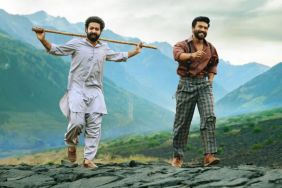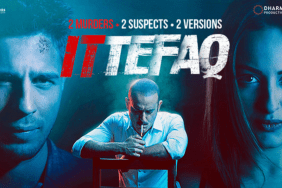In Indian cinema, there are many movies that often tread the fine line between folklore and reality. Rishab Shetty’s magnum opus, Kantara, stands as a testament to the intricate weaving of mythology and societal complexities. In this film viewers embark on a journey through the picturesque landscapes of a forest village. They are confronted with questions that transcend the boundaries of time and ownership.
Check the trailer out here:
How did Rishab Shetty’s movie Kantara end?
To understand the meaning of what happened in the end, let’s dive into what transpired in the film. The story unfolds in 1947 when a mighty king grants land to the indigenous villagers. In order to seek the blessing of the deity Panjurli Daiva.
In 1970, the peace gets disrupted when a descendant of the king demanded the land back during the Bhoota Kala performance. It is a folklore performance where the deity possesses a chosen villager and dances to folk songs. He also blesses the village while stating that the forest and its resources are protected by the deity himself.
Ignoring this warning as a rouse by the possessed actor himself, the landlord declares he wants his land back. Panjurli makes a prophecy that his fate will be decided on the steps of a building. The landlord dies on the steps of a court where he had gone to reclaim the land.
Fast-forwarding to the early 1990s, a new landlord emerges who is friendly with the villagers. Shiva (Rishab Shetty) is a village favorite. He is treated well by the landlord as well. He is known for living the way he wants to, such as drinking alcohol, hunting wild boars, and more.
The authorities appointed Muralidhar (Kishore) as the new forest officer. He is solely focused on the preservation of the forest. Balanced against not letting the villagers cut any trees or get resources from the forest. This soon leads to a clash between Muralidhar and Shiva.
Did Shiva really die in the end?
As the movie unfolds, the real threat is revealed. The true threat lies in the shadows of the seemingly friendly new landlord, conspiring to reclaim the land. This revelation came to the surface when he framed Shiva for a seemingly accidental death.
It’s important to note while all this was transpiring Shiva was also having a recurring nightmare of a wild boar with metallic teeth and seething eyes. The background music throughout the movie “Varaha Roopaka Daiva Va Rishtam,” served as an ode to wild boar (Varaha). Consequently, it is also one of the avatars of Vishnu.
At this point, the tension escalates and the village prepares itself to fight. Despite their lack of firepower, they stood united against the casteist landlord and his ruthless goon. Shiva dies during the fight.
However, Kantara doesn’t end there. The deity Panjurli Daiva himself soon resurrects Shiva. Watching this the entire village prays for vengeance and protection. In a cinematic climax of one-of-a-kind, Shiva destroys the landlord and his goons.
After restoring the village peace, Shiva now a vessel of the deity goes back to the forest – disappearing into a circle of fire. All in all, Kantara’s ending is a mix of justice, sacrifice, and embracing destiny. The cyclical rhythm of fate, the clash between tradition and modernity, and the triumph of righteousness form the heart of the story.
Kantara blends folklore, drama, and thriller elements in a 2-hour 30-minute cinematic experience. All in all, it leaves no room for disappointment.
Kantara is currently streaming on Netflix.










